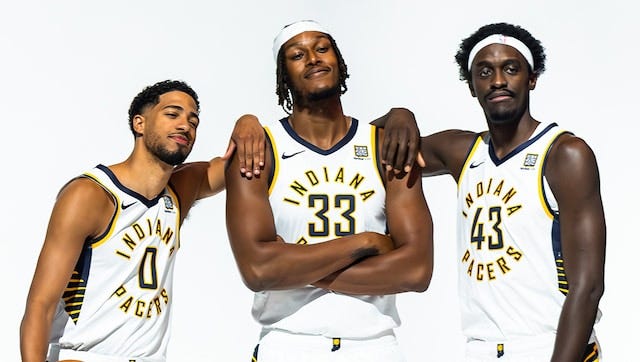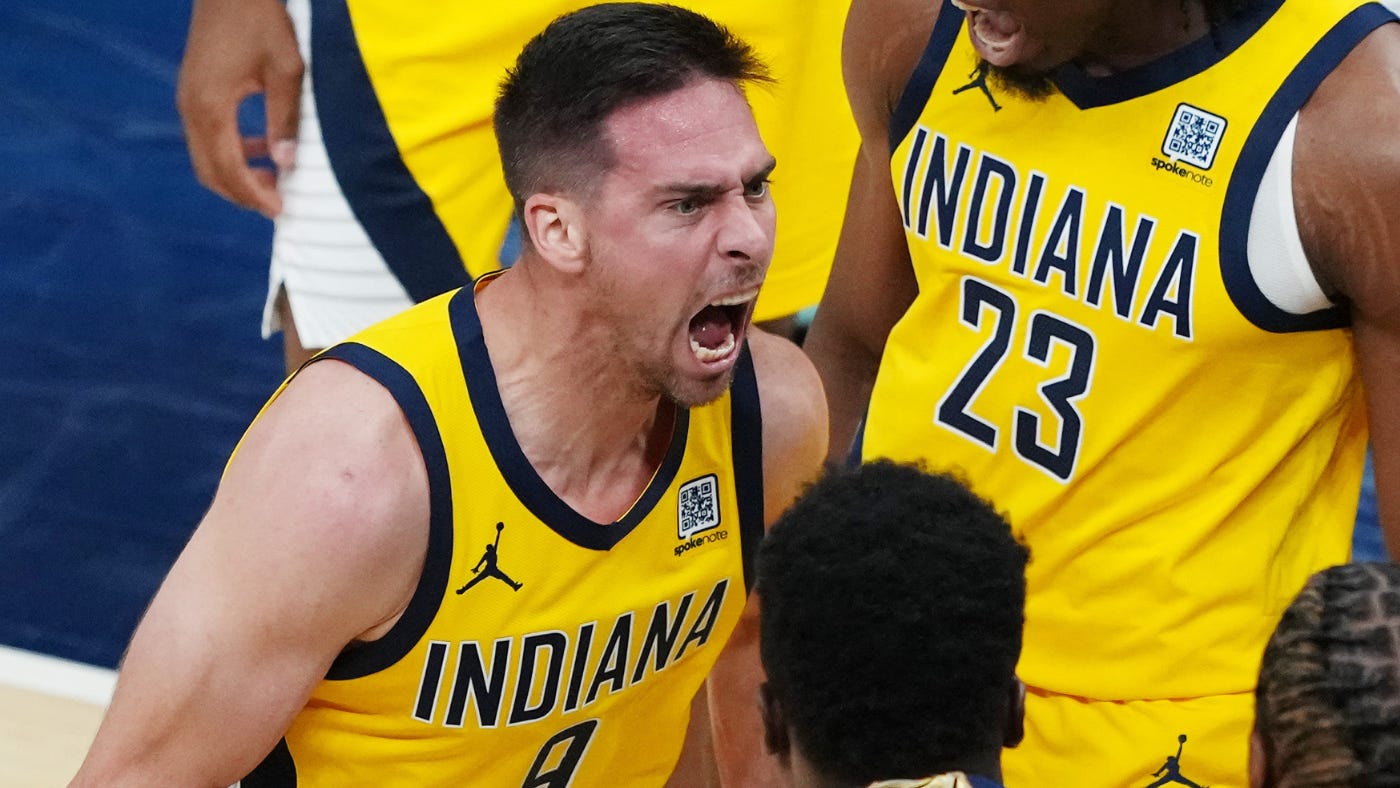When the Pacers got it to be within two points last night in the fourth quarter, it felt like it was too good to be true. Well, the Thunder ran away with the rest of the game because of the following factors (ordered by importance): (1) Jalen Williams playing like the superstar his parents always believed he would become, (2) Rick Carlisle sitting Pascal Siakam for a non-negligible stretch of the fourth quarter, and (3) the Thunder’s defense making the Pacers’ normally-unflappable offense unusually flapped. Alex Caruso may have gotten humbled by TJ McConnell in the 3rd quarter, but he wasn’t about to allow Tyrese Haliburton or Andrew Nembhard do the same with the game on the line. Ideally, Haliburton would have been able to rise to the moment with Siakam on the bench, but an unfortunate injury combined with a ruthless Lu Dort made him into purely a rushed passer with no chances at scoring a basket.
This is part of why so much of the league has followed the model of Harden-izing almost any guard who can score well. The most difficult play to scheme against is an isolation at the top of the key, or a pick-n-roll where the weakest defender is brought into the action to help or switch onto the dominant ball-handler. Then, if you have just one more guy who can consistently punish a team who ends up bailing out to double-team the superstar guard, you’re cooking with gas. Everyone else is there to make those guys succeed by cutting hard, shooting well, defending like maniacs, and offensive rebounding when the chance comes up. So, as we see, the Thunder have Shai Gilgeous-Alexander—who is one win away from being the first Harden-ized lead guard to lead their team to a championship—and Jalen Williams as his flanking super friend. The Pacers, on the other hand, have zagged (very successfully, I’ll say) to build their team in a different, more traditional fashion, with each player having much more defined roles.
Radically Traditional
Let’s look at the Indiana’s top contributors:
Tyrese Haliburton: mildly-athletic, clutch-comfy, funky-shooting point guard who is only one of three players averaging less than 20 points per game while being in the top 15 in assists per game in the NBA.
On defense: Smart but limited
Pascal Siakam: Never too high and never too low power forward who, in 48 out of 78 games, scored between 15 and 25 points. Also, in 44 out of those 78, he had between 6 and 9 rebounds.
On defense: Their most versatile forward but not the most versatile forward
Myles Turner: Shooting big man who can sometimes roll well
On defense: a pure rim protector whose basket can sometimes feel unprotected
Andrew Nembhard: Sporadically aggressive secondary ball handler who, when he’s making shots, looks like he could be worth double what he’ll be getting paid next year ($19m).
On defense: ultra-quick to keep with guys like SGA but gets bullied by guys like Jalen Brunson
Aaron Nesmith: Wing shooter who doesn’t stop moving
On defense: ultra-aggressive to make guys uncomfortable like Jalen Brunson but gets fooled by guys like SGA
Bennedict Mathurin: Traditional shooting guard who can sometimes appear to be the best player in the game
On defense: Will try, sometimes, and can keep up athletically when he does
Obi Toppin: Pure power forward who swings games running hard and shooting threes
On defense: He really does his best and we all appreciate his effort
TJ McConnell: Purest of point guards with an inconceivable knack for scoring on everyone
On defense: Pesky but limited, like most of his physical makeup
In short, each of these players are very different and not very multi-positional. I think that this calls back to the times when Karl Malone and John Stockton were so positionally-specific, and how the whole league seemed to look like that with pure point guards and power forwards.
How, then, do they make it work so well as to be in the finals?
Well, they’re still modern, in their own way. Through five finals games, they’ve played 55 minutes with their two power forwards as their front court (with a +2.3 net rating). In a decision which can be confusing to some, Haliburton and McConnell have played 30 minutes together (with a +8.6 net rating). Also, Haliburton—often compared to Steve Nash or Chris Paul—will go many possessions as an off-ball player with Nembhard or the aforementioned TJ as the ball handler.
Also, they’re clearly watching analytics of the possession game, focusing on preventing transition offense and avoiding turnovers (except for games 1 and 5 of these finals). Despite enjoying the midrange and not being frequent visitors of the restricted area, they still look for inefficiencies to exploit, such as guarding full-court to slow down the offense, and running on opponents’ made shots.
In addition to those strategies, I see them bucking the trend that most of the league is following in the enabling ball handlers to be both the main scorer and contributor:
The Pacers aren’t just bucking the trend, they’re distributing their scoring in an unprecedented way. They don’t have anyone scoring even 17.5% of their points, unlike all of these other teams, including the past two years’ WCF winners having guys score 25% or more of their teams’ points. In a brave way, they’re depending on more guys to step up. I wonder if, because this is no longer the model for team building, teams don’t know how to defend an egalitarian system like this any more.
Okay, so what about these finals?
The two primary factors in the latest Pacers loss were caused by the Thunder defense: back-breaking turnovers by Indiana (especially Nembhard in that fourth quarter), and Haliburton having zero field goals. It’s possible that the Thunder figured that removing Haliburton would give their other four defenders the ability to wreck havoc on the remaining Pacers on the floor. Siakam and McConnell had their significant stretches of figuring-out the Thunder, but overall, it was rough for the rest of the ‘Cers.
If the Pacers are going to win Game 6, they will need to score more. Their defense, while imperfect, has stretched itself to its limits and likely can’t do more than we’ve seen. But, with Haliburton’s potential injury, remember this: last year in the last two games that Haliburton missed against Boston, Andrew Nembhard averaged 28/5/10 on 56/54/100 shooting (only 5 free throws) against Jrue Holiday and Derrick White. Maybe Lu Dort is a different beast to go up against, but I don’t think it’s wise to completely count them out no matter what.






